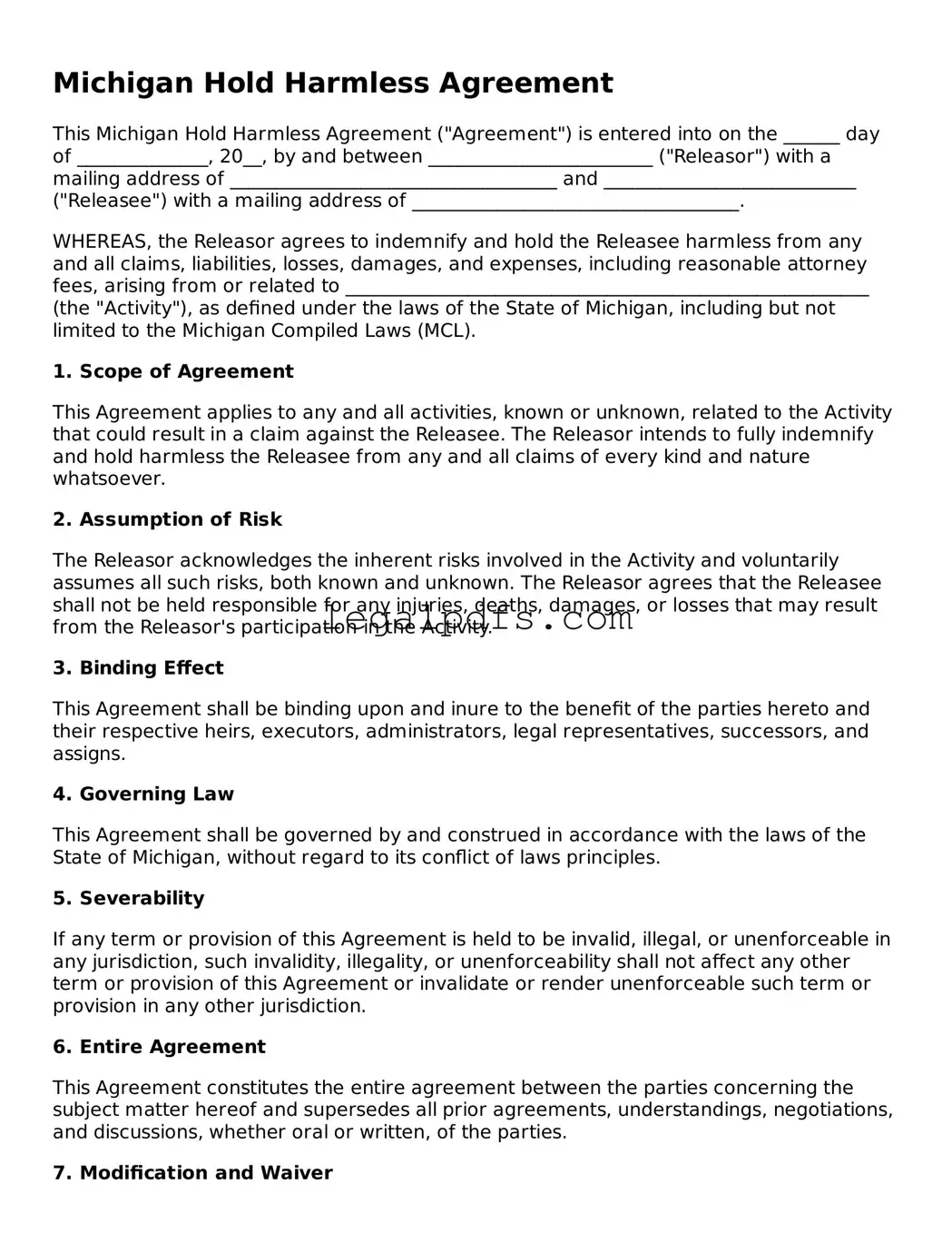Michigan Hold Harmless Agreement
This Michigan Hold Harmless Agreement ("Agreement") is entered into on the ______ day of ______________, 20__, by and between ________________________ ("Releasor") with a mailing address of ___________________________________ and ___________________________ ("Releasee") with a mailing address of ___________________________________.
WHEREAS, the Releasor agrees to indemnify and hold the Releasee harmless from any and all claims, liabilities, losses, damages, and expenses, including reasonable attorney fees, arising from or related to ________________________________________________________ (the "Activity"), as defined under the laws of the State of Michigan, including but not limited to the Michigan Compiled Laws (MCL).
1. Scope of Agreement
This Agreement applies to any and all activities, known or unknown, related to the Activity that could result in a claim against the Releasee. The Releasor intends to fully indemnify and hold harmless the Releasee from any and all claims of every kind and nature whatsoever.
2. Assumption of Risk
The Releasor acknowledges the inherent risks involved in the Activity and voluntarily assumes all such risks, both known and unknown. The Releasor agrees that the Releasee shall not be held responsible for any injuries, deaths, damages, or losses that may result from the Releasor's participation in the Activity.
3. Binding Effect
This Agreement shall be binding upon and inure to the benefit of the parties hereto and their respective heirs, executors, administrators, legal representatives, successors, and assigns.
4. Governing Law
This Agreement shall be governed by and construed in accordance with the laws of the State of Michigan, without regard to its conflict of laws principles.
5. Severability
If any term or provision of this Agreement is held to be invalid, illegal, or unenforceable in any jurisdiction, such invalidity, illegality, or unenforceability shall not affect any other term or provision of this Agreement or invalidate or render unenforceable such term or provision in any other jurisdiction.
6. Entire Agreement
This Agreement constitutes the entire agreement between the parties concerning the subject matter hereof and supersedes all prior agreements, understandings, negotiations, and discussions, whether oral or written, of the parties.
7. Modification and Waiver
No modification of or amendment to this Agreement, nor any waiver of any rights under this Agreement, will be effective unless in writing signed by the parties to this Agreement.
8. Signatures
IN WITNESS WHEREOF, the parties have executed this Michigan Hold Harmless Agreement as of the date first above written.
Releasor Signature: ____________________________________ Date: ___________
Releasor Printed Name: _________________________________
Releasee Signature: ____________________________________ Date: ___________
Releasee Printed Name: _________________________________
